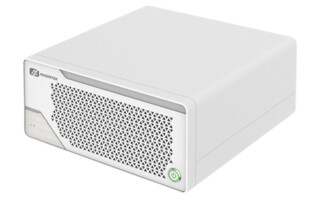Digital Keys Plus Radio Tech Can Lead to Big Advantages
April 22, 2025
Blog

Keys are an invention so ancient that we don’t even think of them as a technology. The earliest lock and key mechanisms date back to ancient Egyptian times, with the ancient Romans introducing metal keys like the mortise locks of today. Nevertheless, key technology has continued to evolve, and there has been an increasing trend towards digital key technologies over recent years.
Digital key
The idea of a digital key is not particularly new – safes with combination locks were invented in the 18th century which is probably the first example of a “digital key” in the broadest sense of the term. The advantage of a digital key is that it cannot so easily be stolen and/or copied or lost. Once a lock is part of a larger electronic system, digital keys offer further advantages. They can be personalized. So, for instance, an individual can be given a key only valid for a defined period. This is used in hotels, or to give someone access to your house for a maintenance task, with the key expiring after the work is finished. Moreover, the key owners can track who has entered and when, as all keys are individual.
They also can be sent remotely to a smartphone, which can offer many productivity benefits, in domains such as hotels, ticketing, and rental properties.
Wireless keys & vehicle entry
Wireless keys first appeared in the 1980’s as a feature for vehicle entry, with the key being a button operated remote control on a key fob. This is often referred to as “keyless entry”, which seems an erroneous description – we will use the term digital key here. Early iterations of this technology were flawed from a security perspective, involving the simple transmission of a digital code. A scanner could relatively easily pick up the signal and replicate the key function, without physical access to the key fob.
A further layer of sophistication was added by the implementation of a rolling code mechanism. Here you have two identical pseudo-random number generators, one in the car, and one in the key, so the unlock code required is different each time the key is used. Under such a system scanning the signal won’t help, as the attacker can’t predict the next code. An alternative mechanism is a “challenge/response” approach – both key and car share a secret algorithm to calculate one number from another. In this system the key needs to provide the right “answer” to a randomly generated number by the car.
Such keys were still vulnerable to being “cloned”, if someone had temporary access to the key, and could copy the code generating application in the key. To counter this problem, modern chips now have separate “secure domains”, where keys and secure processing elements can be written in, but never read out.
Passive entry systems
Passive entry systems are a recent innovation – again first seen in car entry systems. Here the car automatically unlocks once the key is sufficiently close to the vehicle. Proximity is detected wirelessly. This offers a level of convenience, if for example someone is approaching the car carrying shopping or other items.
As with most technical steps forward, this introduced new security flaws into the system. The early iterations of this system used a simple measurement of radio signal strength to detect proximity to the vehicle. Once the key was deemed sufficiently close, the usual code exchange mechanism would be deployed. This system was vulnerable to the “relay attack”. A relay attack is where an intermediate repeater can boost signals between a car and key, simulating proximity.
For example, an attacker can pick up the signal for a key inside the house and boost it sufficiently to reach a car on the drive or street nearby. By merely repeating the received signals and retransmitting them, the relay device doesn’t need to break the encryption and code mechanism, and simulates the key being close to the car.
Introduction of UWB
To counter this threat, newer systems use Ultra-Wide Band (UWB) radios to ensure that the key is truly close to the car. Rather than measure signal strength, with UWB, a very short precisely timed pulse is sent, and upon receipt, a return pulse sent back. By measuring the round-trip time and allowing for the delays in the transceiver, and using knowledge of the speed of light, the true distance can be calculated. The relay attack no longer works, as the longer path length is detected.
In practice, such systems would need two radios, as UWB radios are too power hungry to leave active permanently to detect the proximity of the vehicle, given that the key will typically run off a small coin cell battery. Therefore, a different radio – Bluetooth Low Energy for example – will be used to detect approximate “insecure” proximity, and then UWB engaged to validate securely the precise distance measurement.
Bluetooth Channel Sounding arrival
As an alternative to UWB, the latest version of Bluetooth has introduced a new distance measurement technique into the standard called Channel Sounding. This uses two techniques: a time of flight measurement like UWB and a measurement of phase difference across different Bluetooth frequency channels. The time of flight measurement is far less precise than UWB, as Bluetooth is a narrow band radio. This means pulses are less well defined, and thus harder to time accurately. The phase difference measurement adds precision. However, it is complex and even together is less accurate than UWB. In principle, this could be a cheaper alternative to UWB, but the security and reliability of this mechanism has yet to be tested in practice.
Other secure entry scenarios
So far, we have discussed wireless keys in the context of a traditional key fob – car solutions, as this use case has generally been a pioneer of technology. However, the same applies to many other secure entry scenarios, where there is arguably an even greater utility for the passive entry solution. One example is health care, where porters might need access to secure areas, whilst wheeling heavy items like beds or equipment. Another is warehousing where people or vehicles might want access to restricted areas.
Ticketing is another area where efficiency savings could be possible by automated gates that can detect tickets at a distance, especially in venues with large crowds such as sports grounds or large arenas. Already paper tickets are becoming redundant with some venues demanding electronic tickets only, as a fraud prevention measure.
In such cases, the phone has become the host for the ticket/key. This model is likely to become increasingly prevalent with phones already being used for holding tickets for sports and music venues, boarding passes, and keys for hotels or AirBnb style accommodation and even hire cars. High end phones such as Apple or Samsung latest devices also include UWB chips allowing a full passive digital key solution.
In the commercial sphere, it may remain the case that companies requiring a high level of security prefer a badge-based system, but the core digital elements can be miniaturized onto a wearable badge.
Digital keys – the future
The direction of travel seems clear enough, with the phone likely to become a generic key repository, certainly for consumer-oriented solutions, and perhaps for commercial buildings also. The phone has the advantage of having built-in security mechanisms like biometric locking, so that even if the phone is lost or stolen, access to the keys should not be compromised if they are correctly stored. Different levels of authentication can be imposed flexibly, depending on the level of security required. The barriers to adopting such a solution appear to be mainly psychological – the technology is all there.
Digital keys are likely to replace physical ones entirely over time. Like any technology, they will not be perfect, but then neither is the metal key technology they are replacing. They will be cheaper, offer efficiency savings and provide a wider range of features, such tracking and distribution benefits.




